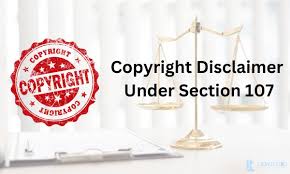In the world of creative works, protecting one’s intellectual property is paramount. Copyright law serves as a shield for creators, ensuring that their original creations are not misused or exploited without permission. One essential aspect of safeguarding these rights is the use of copyright disclaimers. In this article, we delve deep into what copyright disclaimer are, their purpose, how to create them effectively, and their legal implications.
What is a Copyright Disclaimer?
A copyright disclaimer is a statement that clarifies the rights of the copyright owner regarding the use of their work. It typically appears at the beginning or end of a creative work, such as books, websites, videos, and software. The purpose of a copyright disclaimer is to inform the public about the copyright owner’s rights, limitations on use, and any permissions granted for specific uses.
Purpose of Copyright Disclaimers
-
Clarification of Rights: Copyright disclaimers clarify the rights of the copyright owner, including the right to reproduce, distribute, display, and perform the work.
-
Limitations on Use: They specify limitations on how the work can be used, such as non-commercial use only, attribution requirements, or restrictions on derivative works.
-
Permissions Granted: In some cases, copyright disclaimers may grant specific permissions, such as allowing educational use, fair use, or creative commons licenses.
-
Legal Protection: By including a copyright disclaimer, the copyright owner strengthens their legal position by informing users of their rights and discouraging unauthorized use.
Elements of an Effective Copyright Disclaimer
Creating an effective copyright disclaimer involves including specific elements to ensure clarity and legal effectiveness:
-
Copyright Notice: Start with a copyright notice that includes the copyright symbol (©), the year of first publication, and the copyright owner’s name. For example, “© 2024 by [Your Name].”
-
Statement of Rights: Clearly state the rights reserved by the copyright owner, such as reproduction, distribution, public display, and performance.
-
Limitations and Permissions: Specify any limitations on use, such as non-commercial use only, attribution requirements, or permissions granted for specific uses.
-
Disclaimer of Liability: Include a disclaimer of liability to limit the copyright owner’s responsibility for any misuse or unauthorized use of the work.
-
Contact Information: Provide contact information for inquiries regarding permissions or licensing arrangements.
Legal Implications of Copyright Disclaimers
While copyright disclaimers are not a substitute for formal copyright registration, they serve as an important legal tool for creators. Here are some legal implications to consider:
-
Notice of Copyright: Including a copyright disclaimer puts the public on notice that the work is protected by copyright, which can strengthen the copyright owner’s position in legal disputes.
-
Mitigation of Infringement: A well-crafted copyright disclaimer can mitigate claims of unintentional infringement by informing users of the copyright owner’s rights and limitations on use.
-
Enforcement of Terms: If a user violates the terms specified in the copyright disclaimer, it can strengthen the copyright owner’s ability to enforce their rights and seek remedies for infringement.
-
International Considerations: Copyright laws vary by country, so it’s essential to tailor copyright disclaimers to comply with the laws of the relevant jurisdictions.
Common Mistakes to Avoid
When creating a copyright disclaimer, avoid these common mistakes to ensure legal effectiveness:
-
Ambiguous Language: Use clear and precise language to avoid ambiguity regarding the rights and limitations specified in the disclaimer.
-
Omission of Contact Information: Include contact information for inquiries or permissions requests to facilitate legal compliance and licensing arrangements.
-
Failure to Update: Regularly update copyright disclaimers to reflect changes in copyright ownership, permissions, or legal requirements.
-
Inadequate Notice: Ensure that the copyright notice is prominently displayed and easily identifiable to provide adequate notice of copyright protection.
Conclusion
Copyright disclaimers play a vital role in protecting the rights of creators and clarifying the terms of use for their works. By including clear and comprehensive copyright disclaimers, copyright owners can strengthen their legal position, mitigate infringement risks, and promote responsible use of their creative works. Understanding the elements of an effective copyright disclaimer and avoiding common mistakes are key steps in leveraging this important legal tool.

